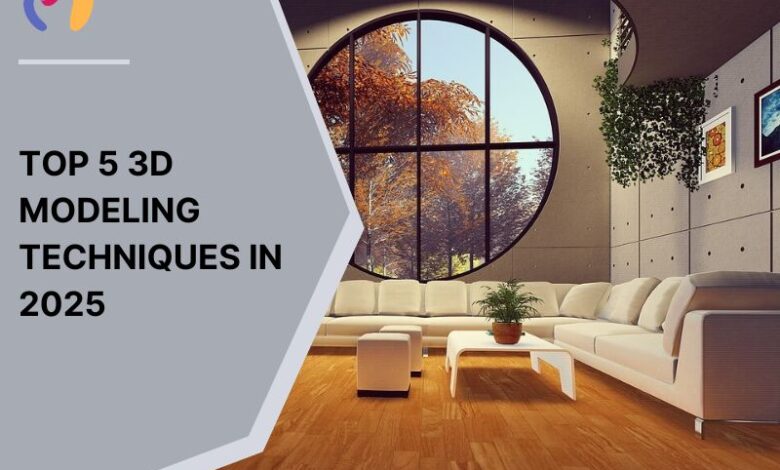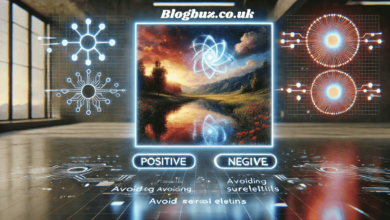Top 5 3D Modeling Techniques in 2025

3D modeling forms the backbone of modern interior, exterior, and architectural design projects in 2025. Design professionals now create photorealistic environments and structures with precision and detail that were previously impossible. Advanced modeling techniques reduce production time from weeks to days while enabling visualizations that clients can explore and modify in real time. Integrating AI and parametric design transforms how architects and designers conceptualize spaces. This article examines five cutting-edge 3D modeling approaches reshaping visualization standards across the industry this year.
Box Modeling
Box modeling transforms basic geometric shapes into complex 3D objects through systematic refinement. This technique gives designers precise control over every element of the mesh structure. Architects and furniture designers rely on this approach to create structural components with clean topology and efficient polygon use.
The box modeling workflow includes:
- Begin with a primitive shape that approximates your target object
- Add strategic subdivisions to areas needing greater detail
- Manipulate vertices and edges to define the object’s form
- Extrude surfaces to create depth and dimension
- Apply smoothing operations where needed
This method excels for architectural elements and furniture design, particularly when combined with edge modeling for projects requiring both structured and organic forms.Box modeling transforms basic shapes into complex 3D objects through refinement.
Contour/Edge Modeling
Edge modeling constructs 3D objects by creating polygon loops that follow the natural contours of a design, building forms from outlines rather than solid shapes. Unlike box modeling, this technique begins with precise edge placement along critical silhouettes, gradually filling spaces between these skeletal outlines.
3D artists prefer this method for objects with irregular forms or flowing curves, such as ornate chair arms, decorative crown moldings, and custom architectural trim work. Edge modeling delivers superior results for organic shapes where topology must follow functional stress lines or aesthetic curves. The technique creates cleaner deformation and sharper definition in areas requiring precise detail, making it invaluable for high-end furniture visualization and custom millwork with complex curvature.Edge modeling constructs 3D objects by creating polygon loops along contours.
Spline/NURBS Modeling
NURBS modeling creates mathematically perfect curved surfaces through control points rather than polygonal faces. This technique generates smooth, continuous forms with precise control over curvature and surface continuity. Product designers utilize NURBS for objects requiring exact specifications and fluid lines like luxury furniture, lighting fixtures, and decorative accessories. For instance, a chandelier 3d model with intricate curves and glass details is best created using spline/NURBS modeling, ensuring smooth, flowing surfaces.
The NURBS workflow consists of:
- Create precise spline curves along key contours and profiles
- Establish control points to define curve behaviors and tangency
- Generate surfaces through lofting, sweeping, or revolving operations
- Refine surfaces by adjusting control point weights and knot vectors
- Trim and blend multiple surfaces for complex forms
NURBS objects maintain mathematical accuracy regardless of scale, though they require conversion to polygons for texturing and rendering in most visualization pipelines.NURBS modeling creates mathematically perfect curved surfaces using control points.
Subdivision Modeling
Subdivision modeling creates smooth organic surfaces from simple polygon meshes through mathematical refinement. This technique starts with a low-resolution cage subdividing into increasingly refined forms while maintaining precise control over edges and features. Designers use this approach for organic furniture, architectural curves, and sculptural elements. For example, a sofa 3d model with a structured frame and soft cushions demonstrates the versatility of subdivision modeling.
The subdivision workflow includes:
- Create a low-polygon base mesh
- Apply subdivision surface modifier
- Add edge loops to control sharpness
- Use creasing to define hard edges
- Refine through selective subdivision levels
Subdivision modeling creates smooth organic surfaces from simple polygon meshes.
Digital Sculpting
Digital sculpting manipulates virtual clay through pressure-sensitive tools, allowing designers to create complex organic forms with intuitive gestures. Artists work directly on high-density meshes using tablets or styluses to push, pull, and pinch digital material. This technique mirrors traditional sculpting while eliminating physical constraints.
Key advantages include:
- Creates intricate organic details without manual polygon manipulation
- Bypasses technical topology concerns during creative phases
- Enables rapid iteration of complex decorative elements
- Produces natural-looking surface textures and imperfections
- Ideal for custom furniture pieces and architectural ornamentation
Digital sculpting transforms the creation timeline for highly detailed elements in interior and architectural visualization projects.
Conclusion
These five modeling techniques form the core toolkit for architectural visualization professionals in 2025. Each method offers distinct advantages for specific design challenges, from precision-driven architectural elements to free-form decorative objects. The most effective designers combine these approaches within single projects, selecting the optimal technique for each component. Software platforms continue to blur the boundaries between these methods, creating hybrid workflows that maximize efficiency. Mastery of these fundamental techniques provides a solid foundation as modeling technology advances with each software iteration




